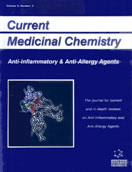Abstract
Osteoarthritis (sometimes called “arthrosis” or “osteoarthrosis”) often entails a slow and gradual deterioration of the joint that may sometimes lead to its total destruction and the need for an operation to replace it. However, for most patients with osteoarthritis, surgical treatment never becomes necessary, and their symptoms can be dealt with satisfactorily by self management, by non-pharmacological treatment or by pharmacological treatment. Osteoarthritis is not one single disease, but should rather be seen as a common final stage, joint failure, where the initial stages of the disease process can be triggered by many different causes. The main symptoms are joint pain, stiffness and limited mobility, which may lead to impairment and handicap. When the disease is far advanced an X-ray examination will show signs in the form of reduced joint space and osteophytes. These changes to the structure of the joint are caused by the destruction of the articular cartilage and the growth of bone deposits at the margins of the joints. Today there is no treatment which can stop the progress of the arthritic disease and joint destruction in osteoarthritis, but there is a series of treatments which can reduce the pain and help to maintain or improve function.
Keywords: arthrosis, x-ray examination, cartilage, interleukin, tumour necrosis factor alpha, proteolytic enzymes
 2
2

